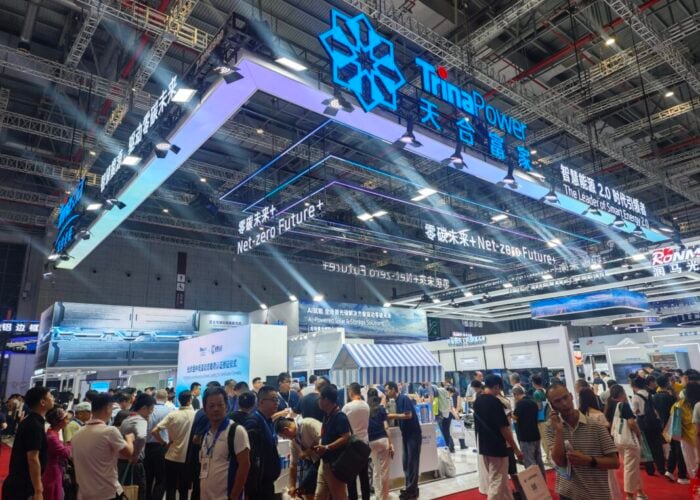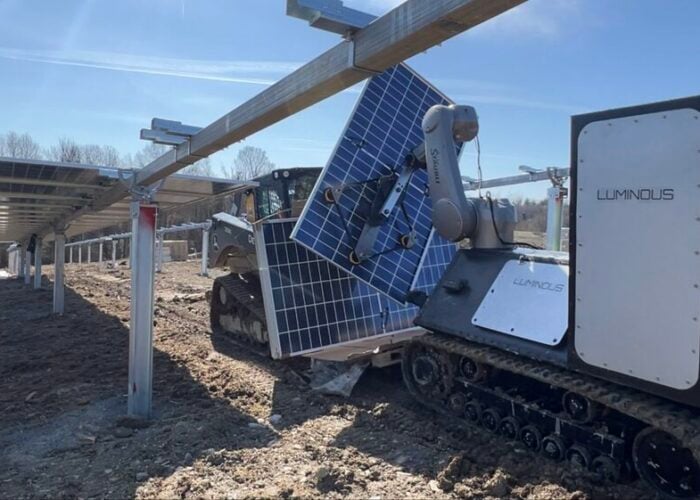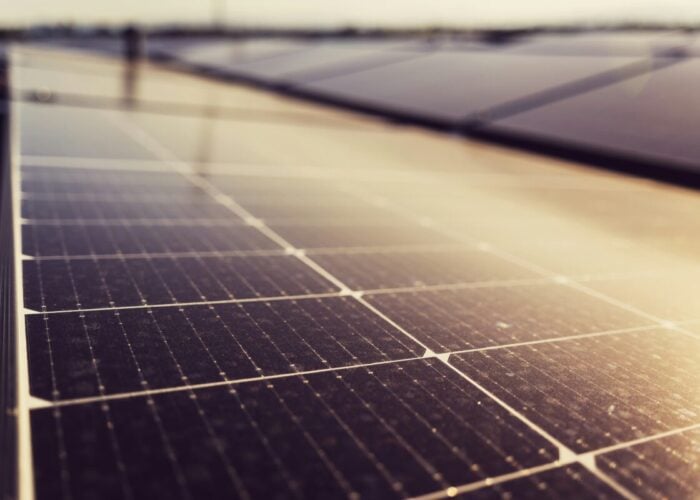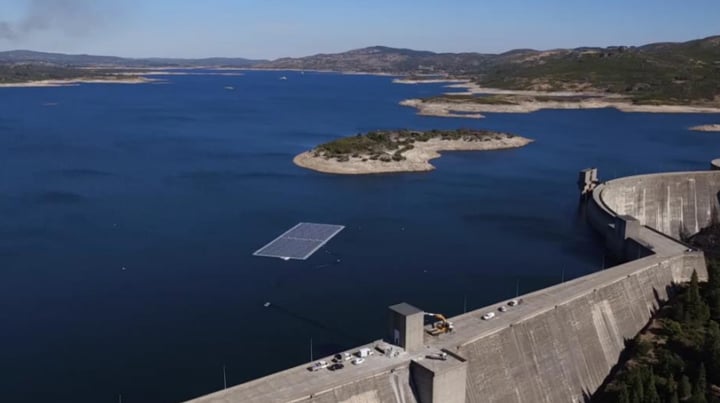
The pioneer of floating solar power plants, French company Ciel & Terre (C&T) International has collaborated with Portuguese energy firm EDP (Energias de Portugal) Group to design and build the first floating solar project at an existing hydro-electric power station at a dam located at the mouth of Rabagão river in Montalegre, Portugal.
Working with EDP subsidiaries, C&T developed a 220kWp floating solar power plant, using 840 solar modules on its ‘Hydrelio’ mounting platform, occupying an area of around 2500m2 and cost around €450,000.
Unlock unlimited access for 12 whole months of distinctive global analysis
Photovoltaics International is now included.
- Regular insight and analysis of the industry’s biggest developments
- In-depth interviews with the industry’s leading figures
- Unlimited digital access to the PV Tech Power journal catalogue
- Unlimited digital access to the Photovoltaics International journal catalogue
- Access to more than 1,000 technical papers
- Discounts on Solar Media’s portfolio of events, in-person and virtual
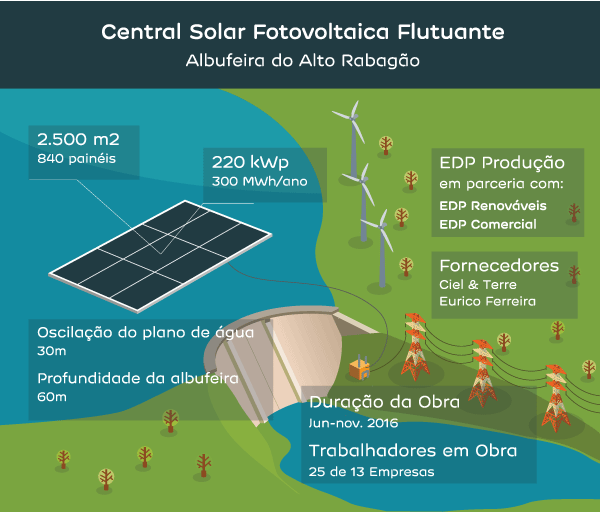
The pilot project was initiated by EDP back in 2015 and has been operating since the end of November, 2016. C&T noted that the plant was expected to generate 332MWh’s of electricity in its first year. EDP noted that that in the first 7 months of operation production of 160MWh had been achieved and higher than expected for this period.
A key advantage of floating solar on dams used with hydro-electric power generation is the close proximity of a high-voltage grid connection, often despite remote locations.
In a large utility-scale installation the floating solar system can provide significant more renewable energy than initially designed as a hydro-electric station and reduce demand for hydro when water levels are lower, extending the overall power generation period of the plant. Water evaporation would also be reduced, extending the operating period for hydro-electric stations when deploying floating solar.
EDP had said that the pilot project tested floating solar in extreme environmental conditions, including the typical high water levels to the low water levels at the Alto Rabagão reservoir that would test the mooring capabilities of the pilot project. C&T noted that mooring the floating power plant was at more than 60 meters in depth, while dealing with a water level variation of 30 meters.
C&T also said that Portugal had high a potential to adopt floating solar solutions, primarily due to existing water resources that have a total of around 6GWp of hydro-electric capacity.
On a global basis, C&T believes that covering only 10% of the 50 largest dams in the world, floating solar could provide 400GW of solar electricity.
The company had successfully installed around 50 floating solar systems by the end of 2016 equivalent to 60MWp. C&T expects to reach installs totalling over 150MWp in 2017.
C&T worked with EDP Produção, EDP Renováveis and EDP Comercial as well as Portuguese company D2M-Energytransit, a specialist in the energy sector.


